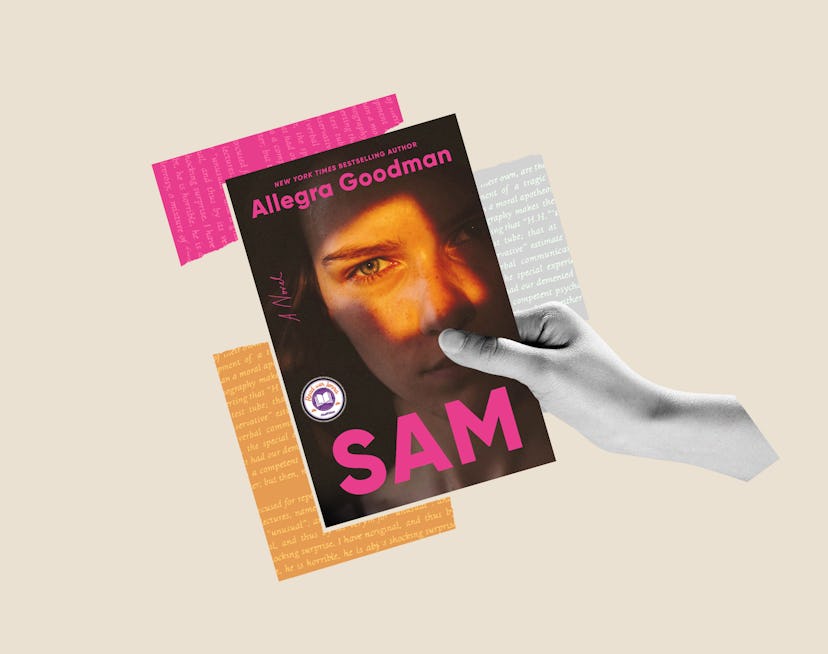Bustle Book Club
Allegra Goodman Procrastinates By Reading Time-Management Books
Even if she doesn’t actually follow the advice.

In the past, Allegra Goodman spent her writing days immersed in intricate, fictional worlds: For the novel Kaaterskill Falls, she crafted a small community of Orthodox Jews in the late ‘70s; with Intuition, she fabricated the politics of a cancer research lab. But to write her latest novel, Sam, Goodman challenged herself to look inward. “It was almost like I was performing the character,” Goodman tells Bustle. “I just got inside of her and fully enjoyed being a 7-year-old again, then a 10-year-old, and each of those ages as they went. That was the magic of the book, just sort of reliving that in a way.”
Sam begins when the novel’s eponymous protagonist, a rambunctious rock-climber, is 7 and struggling. Her dad isn’t around much, her mother is having a hard time making ends meet, and the other girls at her Massachusetts elementary school aren’t very friendly to her. The book follows Sam through the duration of her adolescence, confined to her experience; only as Sam ages does the language and perspective of the narration progress. The result is an achingly intimate portrait of growing up — but for a long time, Goodman resisted going so deep on one singular character. “In certain drafts, I tried to make the book bigger or add other points of view and the material seemed to resist that,” Goodman recalls. “I was just like, I have to embrace this. I have to embrace her. She is the book.”
Embracing Sam turned out to be immensely cathartic for Goodman — a way of reflecting on her own experience of girlhood, as well as her relationship with her own daughter. “I drew upon my memories [of being a kid], but at the same time, now, from my older perspective I know what it's like to get a call from school or hear from a teacher that something happened with your child,” she says. “[Sam was about] seeing it both ways.” In literature, at least, you can have your cake and eat it too.
Below, Goodman reflects on her love of black licorice, her Jane Austen pillow, and reading about T.S. Eliot’s secret muse.
On what she’s reading now:
I'm reading a nonfiction book, The Hyacinth Girl by Lyndall Gordon, which is about T.S. Eliot and his secret relationship with a woman named Emily Hale. He wrote a letter before he died [saying] that this woman meant nothing to me, but he’d also written her over a thousand letters. He destroyed all of her letters, but she kept all of his and donated them to Princeton. Then they were sealed for 60 years or something, and in 2019 they were unsealed and Lyndall Gordon went into Princeton and read them all. So [the book reveals that] this is the young woman who he fell madly in love with, and is the Hyacinth Girl in “The Waste Land.” She was his muse, and it's just a wonderful nonfiction book.
On her special snack stash:
My favorite snack is Darrell Lea Soft Australian Black Licorice — it just has a pure black flavor. I love black licorice and nobody in my family will eat it, so it's perfect because otherwise everybody else eats my snacks.
On her preferred method of procrastination:
I like to procrastinate by reading time management books. Books like 168 Hours: You Have More Time Than You Think by Laura Vanderkam. I don't actually follow the advice, but reading books like these is a great way to put off working. I keep them around and then I end up giving them away and then I buy more. Another way I procrastinate is I like to organize things. I'll go through my desk or buy books about decluttering. Then I declutter by giving those books away, too.
On her favorite writing nook:
My desk is in a really sunny window and I don't have a good curtain, so it gets too sunny to see my screen. So then I retreat to this corner of my study, which is shady, and I hide out on this little ledge between my window and my printer. That's where I get most of my work done. On my desk I have a really pretty picture of a page from the Ellesmere Manuscript of The Canterbury Tales, which has this beautiful medieval writing on it. I also have a pillow with Jane Austen's face on it. So I have some of my heroes.
This interview has been edited and condensed for clarity.
This article was originally published on